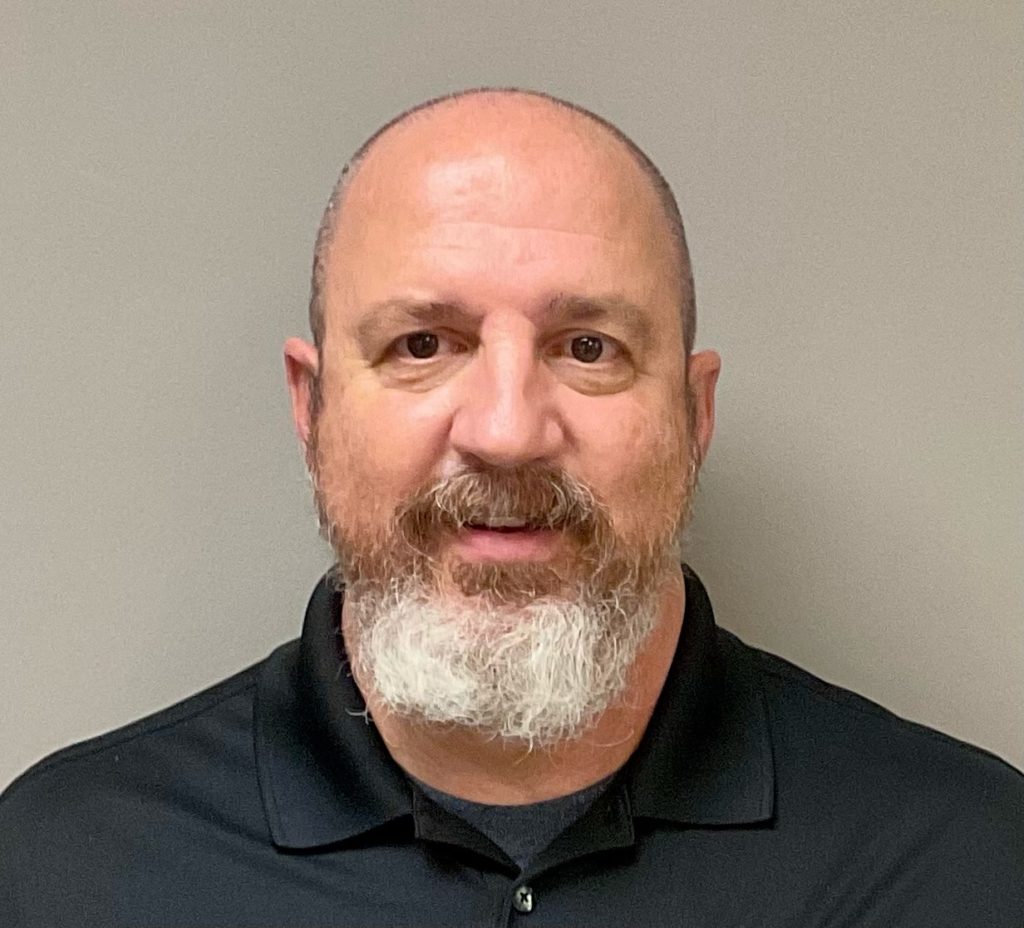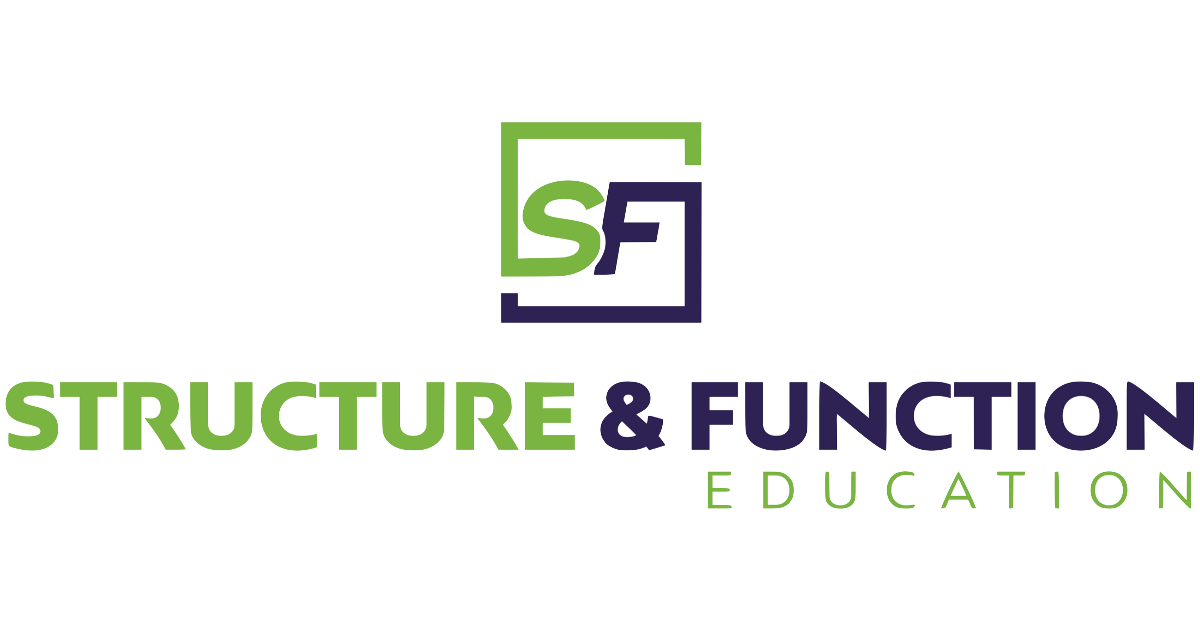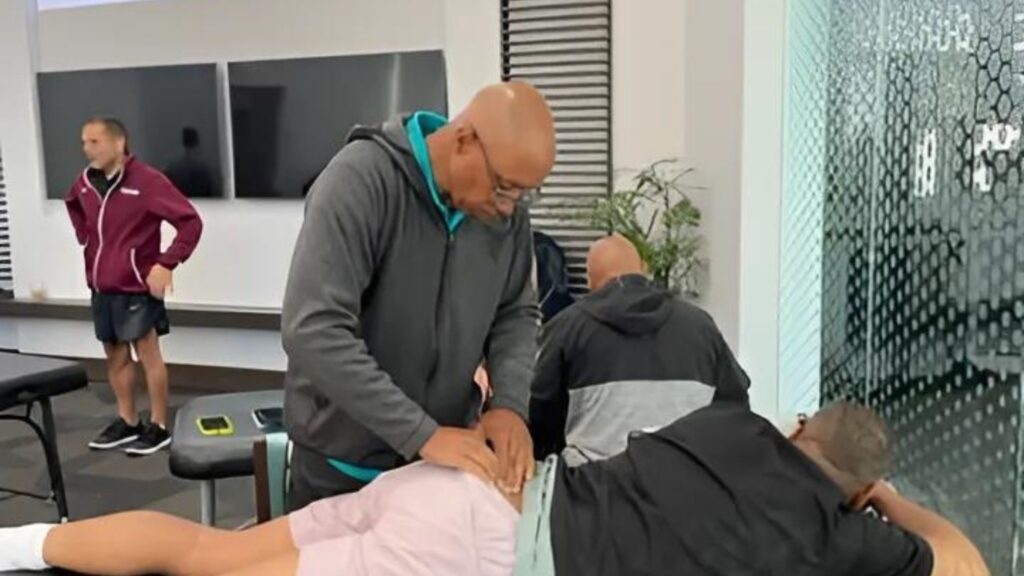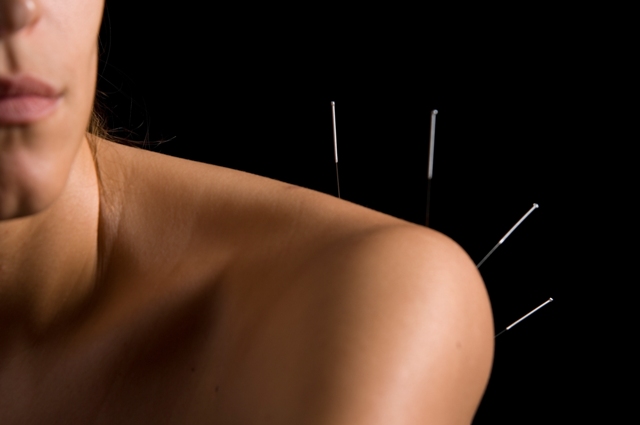Treating Low Back Pain with the Fascial Manipulation Method
This is a comprehensive overview and evidence based practice review for treating low back pain using the Stecco developed model for the Fascial Manipulation Method®. After giving a brief history on the development pf the Fascial Manipulation Method® we will discuss the basic principles using in their training methodology and how it can be applied to treating low back pain.
“What’s in a name?”
The term fascial manipulation likely will bring up thoughts of a technique. You may say to yourself, “I’ve heard of people releasing fascia” or it may conjure up images of stretching the fascia or maybe “breaking up” adhesions. You may have a negative view when it comes to “fascia” based on these images. Some people apply an esoteric, or metaphysical aspect to assessment and treatment of fascia. Well, let’s take a few minutes and look at fascia from a different perspective.
Fascial Manipulation® (FM) method, developed by Italian physiotherapist Luigi Stecco, is a fresh approach to treating musculoskeletal pain and dysfunction. Initially, Luigi Stecco developed a model through observation of other techniques/methodologies that were being utilized to treat musculoskeletal pain when he began his physical therapy career 50 years ago. Seeing the success of others, he wondered if there was commonality between practitioners that treated “trigger points” over bellies, performed transverse friction massage over tendons, used needles inserted into muscles and tendons, as well as those who utilized joint manipulation/mobilization. His reasoning led him to studying the deep muscular fascia because it appeared at the time this was the connective element uniting these other methods. Ultimately, this provided for development of an algorithm for assessment and treatment utilizing manual techniques that focuses on the fascial system, and its network involving muscles, bones, nerves, and organs. There has been a plethora of articles since, including opinion, laboratory and clinical studies expanding our knowledge of the fascial system and its likely role in addressing musculoskeletal pain through a clarification of the Structure & Function Education® of the deep muscular fascia.
The Fascial System
To appreciate the Fascial Manipulation model, it’s crucial to understand the fascial system itself. Fascia is a type of connective tissue that forms a continuous web throughout the body, providing structural support and impacting mobility. It can be categorized into three types:
- Superficial Fascia: Located beneath the skin and attached to superficial and deep retinacula cutis with a superficial fatty layer allowing for thermoregulation and separation of exteroception from deeper layers.
- Deep Fascia: This layer surrounds muscles, bones, and nerves, offering support and is organized in a way to provide aid for directional feedback, or proprioception.
- Visceral Fascia: Provides support for internal organs, vessels and glands.
Luigi Stecco’s Fascial Manipulation model is grounded in several key principles:
1. Physiology
The fascial system is integral to movement and stability, as it allows for the transmission of mechanical forces throughout the body. Disruptions or restrictions in this system can lead to pain, reduced mobility, and functional impairments. In 2006 Carla Stecco, MD published a paper, demonstrating “that the fasciae are formed of numerous layers of undulating collagen fiber bundles. In each layer, the bundles are parallel to each other, whereas adjacent layers show different orientations. Each layer is separated from the adjacent one by a thin layer of adipose tissue (extracellular matrix (ECM)). Many elastic fibers and a variety of both free and encapsulated nerve endings, suggesting a proprioceptive capacity of the deep fascia.”(1) She likened this organization to “plywood” where a multilayered, organized structure provides greater strength in many directions. Unlike plywood in which successive layers are laminated to each other, the deep fascia has the loose connective tissue layer created by the ECM that allows for the potential of movement.
2. Fascial Restrictions
According to Stecco, many musculoskeletal issues stem from restrictions within the fascial system. These restrictions can cause pain, alter movement patterns, and lead to compensatory mechanisms that further exacerbate the problem. Rather than attributing these restrictions to changes in the fibrous component of the deep fascia, studies have shown that it is the alteration in the loose connective tissue between the fibrous layers that may be the culprit. This alteration has been dubbed a “densification” due to observed changes in the fluid component of the deep fascia. In 2013 Antonio Stecco, MD published a paper implicating the loose connective tissue/ECM, particularly, the glycosaminoglycan (GAG), hyaluronan in myofascial pain syndromes.(2) He followed this up with a paper in 2014 where he presented observation of changes in the loose connective layer in patients with chronic neck pain. “The data support the hypothesis that the loose connective tissue inside the fasciae may play a significant role in the pathogenesis of chronic neck pain.”(3)
3. Functional Units
Recent research has demonstrated the interaction between muscle fibers and intramuscular connective tissue(4), and between the muscles and their aponeurotic fascia, suggesting that the muscles can no longer be considered the only elements that organize movement. This awareness led Luigi Stecco, in 2002, to create a new term, the “myofascial unit”, describing the relationship, both anatomical and functional, occurring between fascia, muscle and perceptive elements. A narrative review describing this new term, and whether it is actually correct to consider the myofascial unit as the physiological basic element for peripheral motor control was published in 2023.(5)
4. Assessment and Diagnosis
The assessment includes systematic palpation combined with observation of movement patterns, in an organized and reproducible way based on the “myofascial units” described above, as well as recent observations of the relationship between the deep fascia and proprioceptors(6 -7) giving meaning to the motor units and movement direction.
It is through these observed relationships between the continuity of the deep muscular fascia, the muscle, and the peripheral nervous system that we can codify and expand on the concept of regional interdependence. In manual therapies, we tend to be “myopic” in our view during assessment and treatment, only considering the site of symptoms along with adjacent segments. In contrast, when we consider the influence of therapeutic exercise in our treatments, we will often use a broader approach in addition to our targeted intervention. As an example, when someone sprains an ankle, it’s not likely we rehab just the ankle, but we will more than likely include the whole limb and beyond to influence return to function. FM not only allows for systematic assessment of alteration in the deep fascia and its influence between neighboring “segments”/joints but also allows for understanding and influence on movement from a broader perspective.
Fascial Manipulation and Treating Low Back Pain
The Fascial Manipulation method has garnered increasing interest from the scientific and medical communities. Research has demonstrated that fascial densifications can contribute to pain and dysfunction, supporting the rationale behind Stecco’s approach. Studies have shown that manual techniques targeting the fascia can significantly improve pain and function, though more research is needed to validate and standardize these techniques fully.
With regard specifically to the lower back, several articles recently demonstrated FM’s effectiveness in treating lower back pain.(8-11) A recent randomized controlled clinical trial explored the effects of FM® vs. standard physical therapy treatment (SPT) in patients with low back pain (LBP).(8) 102 participants with LBP received SPT or FM®. Numeric Pain Rating Scale (NPRS), 15-point Global Rating of Change (GROC), and Oswestry Disability Index (ODI) were used to monitor progress. The FM® group had significantly lower ODI and NPS scores and significantly higher GROC scores. The FM® subjects had almost three times the change in NPRS compared to their SPT counterparts. They concluded that FM® appears to improve NPRS, GROC, and ODI more than SPT and that FM® may provide an effective treatment technique for LBP.
Another study focused on a therapeutic approach to chronic aspecific low back pain (CALBP).(9) This study aims to compare the effectiveness of Fascial Manipulation® associated with a physiotherapy program following guidelines for CALBP compared to a physiotherapy program alone. 24 subjects were randomized into two groups, both received eight treatments over 4 weeks. Pain was measured with the visual analogue scale (VAS) and the brief pain inventory (BPI), function with the Rolland-Morris disability questionnaire (RMDQ), state of well-being with the short-form 36 health-survey (SF-36). Patients receiving Fascial Manipulation® showed statistically and clinically significant improvements at the end of care for all outcomes, in the short (RMDQ, VAS, BPI) and medium term for VAS and BPI compared to manual therapy. They concluded that fascial tissues were implicated in the etiology of CALBP, and FM treatment led to decreased symptoms, improved function, and perceived well-being outcomes of greater amplitude than manual therapy alone.
Lastly, another painful back condition, sacroiliac joint pain.(11) The purpose of the study was to evaluate the effectiveness of incorporating a single session of Stecco’s Fascial Manipulation Method®, treating the muscular fasciae at a distance from the painful region in patients with SI joint pain. Twenty patients with acute and chronic sacroiliac joint dysfunction (SIJD) underwent a predefined assessment protocol, followed by an evaluation of myofascial pain and subsequent manipulation of the fascia at points at least 20 cm away from the posterior inferior iliac spines (PIIS). They concluded that a single Fascial Manipulation treatment, even when applied at least 20 cm from the PIIS, can potentially decrease pain around the SIJ.
Conclusion
Luigi Stecco’s Fascial Manipulation model represents a significant advancement in the treatment of musculoskeletal pain and dysfunction. Focusing on the structure and function of the fascial system offers a targeted approach to addressing the root causes of pain and movement limitations. Using manual techniques, functional exercises, and patient education, Fascial Manipulation aims to restore optimal fascial function and improve overall well-being. As research continues to support its efficacy, the Fascial Manipulation method stands out as a valuable tool in the field of physical therapy and rehabilitation.
So, what’s in name? A whole lot more! Investigate for yourself and join us in one of our Fascial Manipulation courses. If you’re interested in learning Fascial Manipulation, visit Structure & Function Education® and learn more about our Fascial Manipulation Level 1 Course. To enroll today, click on this link: Structure & Function Education’s® hosted Fascial Manipulation upcoming course.

Larry Steinbeck, PT
InstructorLarry Steinbeck, PT graduated with a Bachelor of Science from Ball State University in 1985 with degrees in physical therapy(major) and athletic training (minor). In 1986 he earned a Master of Science degree in physical education/athletic training from Ohio University. He was a participant in the first English language Fascial Manipulation course that took place in 2010 in Thiene, Italy. He has been fortunate to take many trips to Italy to learn from the Stecco’s directly and his primary mentors, Julie Ann Day, Giorgio Rucli and Lorenzo Copetti. Larry currently works in a general outpatient setting in Jasper, GA.
References
- Stecco, C. “Histological characteristics of the deep fascia of the upper limb.” Ital J Anat Embryol 111 (2006): 105
- Stecco, A., Gesi, M., Stecco, C. et al. Fascial Components of the Myofascial Pain Syndrome.Curr Pain Headache Rep 17, 352 (2013).
- Stecco A, Meneghini A, Stern R, Stecco C, Imamura M. Ultrasonography in myofascial neck pain: randomized clinical trial for diagnosis and follow-up. Surg Radiol Anat. 2014 Apr;36(3):243-53.
- Pirri, C., Petrelli, L., Guidolin, D., Porzionato, A., Fede, C., Macchi, V., De Caro, R., & Stecco, C.(2024). Myofascial junction: Emerging insights into the connection between deep/muscular fascia and muscle. Clinical Anatomy, 37(5), 534–545.
- Stecco, A.; Giordani, F.; Fede, C.; Pirri, C.; De Caro, R.; Stecco, C. From Muscle to the Myofascial Unit: Current Evidence and Future Perspectives. Int. J. Mol. Sci. 2023, 24, 4527.
- Stecco, C., Pirri, C., Fede, C., Fan, C., Giordani, F., Stecco, L., Foti, C. and De Caro, R. (2019), Dermatome and fasciatome. Clin Anat, 32: 896-902
- Fede, C., Petrelli, L., Guidolin, D. et al. Evidence of a new hidden neural network into deep fasciae. Sci Rep 11, 12623 (2021).
- Harper B, Steinbeck L, Aron A. Fascial manipulation vs. standard physical therapy practice for low back pain diagnoses: A pragmatic study. J Bodyw Mov Ther. 2019 Jan;23(1):115-121. doi: 10.1016/j.jbmt.2018.10.007. Epub 2018 Nov 3. PMID: 30691738.
- Branchini M, Lopopolo F, Andreoli E, Loreti I, Marchand AM, Stecco A. Fascial Manipulation® for chronic aspecific low back pain: a single blinded randomized controlled trial. F1000Res. 2015 Nov 3;4:1208. doi: 10.12688/f1000research.6890.2. PMID: 26834998;
- Sikdar S, Srbely J, Shah J, Assefa Y, Stecco A, DeStefano S, Imamura M, Gerber LH. A model for personalized diagnostics for non-specific low back pain: the role of the myofascial unit. Front Pain Res (Lausanne). 2023 Oct 13;4:1237802. doi: 10.3389/fpain.2.
- Bertoldo D, Pirri C, Roviaro B, Stecco L, Day JA, Fede C, Guidolin D, Stecco C. Pilot Study of Sacroiliac Joint Dysfunction Treated with a Single Session of Fascial Manipulation® Method: Clinical Implications for Effective Pain Reduction. Medicina (Kaunas)




